By Dr. Salam Slim Saad
Imagine a symphony where every instrument plays in perfect harmony, creating beautiful music. This is what happens when team members communicate effectively – magic unfolds, goals are crushed, and success becomes inevitable.
Effective communication is the lifeblood of successful team collaboration. It serves as the foundation upon which ideas are shared, decisions are made, and progress is achieved. Without clear and open lines of communication within a team, misunderstandings can arise, leading to conflicts and delays in project delivery.
When team members communicate effectively with one another, they build trust and foster a sense of unity. This enables them to work cohesively towards common goals, leveraging each other’s strengths and expertise. In an environment where communication flows freely, creativity flourishes as diverse perspectives are brought to the table.
Moreover, effective communication ensures that everyone is on the same page regarding tasks, deadlines, and expectations. This alignment reduces the chances of errors or duplicated efforts within the team. By fostering clarity and transparency in their interactions, teams can achieve greater efficiency and productivity in their collaborative endeavors.
Common Communication Barriers in Teams
Whether you’re part of a small project team or a large organization, recognizing and overcoming these barriers is essential for fostering effective communication. We’ll explore some common communication barriers in teams and provide practical tips and tricks to help you navigate and overcome them.

- Lack of Clarity: Unclear messages or instructions can lead to misunderstandings and confusion among team members. This barrier often arises when communication is rushed or not well thought out.
- Poor Listening Skills: Ineffective listening can impede communication, as team members may fail to fully understand or acknowledge each other’s perspectives. This barrier can stem from distractions, preconceived notions, or simply a lack of focus.
- Language and Cultural Differences: In diverse teams, language barriers and cultural differences can hinder communication and create misunderstandings. Different communication styles, norms, and expressions may lead to misinterpretations and conflicts.
- Hierarchy and Power Dynamics: Hierarchical structures and power imbalances within teams can stifle open communication. Team members may hesitate to speak up or share their ideas freely, fearing repercussions or judgment from those in positions of authority.
- Technology Challenges: Reliance on technology for communication can introduce its own set of barriers, such as technical glitches, connectivity issues, or mismanagement of communication platforms.
Practical Tips and Tricks for Effective Communication:
Whether you’re working on a project with a small group or collaborating with a large team across different departments, clear and efficient communication is essential for achieving your goals. In this blog post, we’ll explore practical strategies for improving team communication that you can immediately implement to enhance collaboration and productivity.

- Establish Clear Communication Channels: One of the first steps in improving team communication is establishing clear channels for sharing information and updates. Whether through email, instant messaging platforms like Slack or Microsoft Teams, or project management tools such as Trello or Asana, make sure everyone knows where to go for important communications related to the project.
- Set Expectations and Guidelines: To avoid confusion and misunderstandings, set clear expectations and guidelines for communication within the team. Define protocols for how often team members should check their emails or messages, how quickly they should respond to inquiries, and the preferred method of communication for different types of messages (e.g., urgent vs. non-urgent).
- Foster Open Communication: Encourage an environment of open communication where team members feel comfortable sharing their ideas, concerns, and feedback. Create opportunities for brainstorming sessions, team meetings, and one-on-one discussions where everyone’s voice is heard and valued. Remember, effective communication is a two-way street – it’s not just about talking but also about listening actively to what others have to say.
- Be Clear and Concise: When communicating with your team, strive to be clear and concise in your messages. Avoid using jargon or overly technical language that may confuse others. Instead, use simple and straightforward language to convey your points. Break down complex information into smaller, digestible chunks, and use bullet points or numbered lists to organize your thoughts.
- Use Visual Aids: Visual aids such as charts, graphs, and diagrams can be powerful tools for enhancing communication within a team. They can help convey complex information more effectively and facilitate understanding among team members. Consider using visual aids during presentations, meetings, or in project documentation to reinforce key points and concepts.
- Schedule Regular Check-ins: Regular check-in meetings are an excellent way to keep everyone on the same page and ensure that communication remains open and transparent. Use these meetings to provide updates on project progress, discuss any challenges or roadblocks, and solicit feedback from team members. By meeting regularly, you can address issues proactively and keep the project moving forward smoothly.
- Provide Constructive Feedback: Feedback is essential for growth and improvement within a team. However, it’s important to provide feedback in a constructive and respectful manner. Focus on specific behaviors or actions rather than criticizing individuals personally. Offer suggestions for improvement and acknowledge the strengths and contributions of team members.
- Practice Active Listening: Encourage team members to listen actively during meetings and discussions, focusing on understanding rather than simply waiting their turn to speak. Repeat back or summarize what others have said to ensure clarity and demonstrate active engagement.
- Nonverbal Communication: Pay attention to your body language, facial expressions, and tone of voice, as these nonverbal cues often convey more meaning than words alone. Maintain an open and inviting posture to signal approachability and receptiveness to others.
- Ask Questions and Seek Clarification: Don’t hesitate to ask questions or seek clarification if something is unclear or ambiguous. Avoid making assumptions and instead, seek to understand the other person’s perspective through meaningful dialogue.
- Practice Empathy: Put yourself in the shoes of the other person and try to understand their thoughts, feelings, and concerns. Show empathy and validation by acknowledging their emotions and demonstrating genuine interest in their perspective.
- Cultivate Cultural Awareness: Educate yourself and your team members about different cultural norms and communication styles. Foster a culture of inclusivity and respect, where diverse perspectives are valued and celebrated.
- Create a Safe and Open Environment: Encourage open dialogue and feedback within the team, regardless of hierarchical positions.
- Lead by example by actively soliciting input from all team members and demonstrating respect for their contributions.
- Master Technology Tools: Familiarize yourself with communication tools and platforms used by your team, and stay updated on their features and functionalities. Address technical issues promptly and provide support and training as needed to ensure smooth communication flow.
Tools and Technologies for Enhancing Communication in Remote Teams
Many tools and technology are available to improve communication in remote teams. Here are some tools and technologies, as well as practical tips and tactics, to help you and your remote team interact efficiently and accomplish success.
Video Conferencing Tools:
Tip: Schedule regular video meetings to facilitate face-to-face interactions and foster a sense of connection among remote team members.
Trick: Encourage participants to turn on their video cameras during meetings to promote engagement and minimize distractions.
Recommended Tools: Zoom, Microsoft Teams, Google Meet.

Instant Messaging Platforms:
Tip: Utilize instant messaging platforms for quick updates, informal communication, and team collaboration.
Trick: Create separate channels or groups for different projects or topics to keep conversations organized and focused.
Recommended Tools: Slack, Microsoft Teams, Discord.
Project Management Software:
Tip: Use project management software to track tasks, set deadlines, and monitor progress on remote projects.
Trick: Break down larger projects into smaller tasks and assign them to specific team members to improve accountability and visibility.
Recommended Tools: Asana, Trello, Jira.
Document Collaboration Tools:
Tip: Collaborate on documents, spreadsheets, and presentations in real-time using cloud-based document collaboration tools.
Trick: Enable commenting and version control features to facilitate feedback and track changes effectively.
Recommended Tools: Google Workspace (Google Docs, Sheets, Slides), Microsoft Office 365 (Word, Excel, PowerPoint).
Virtual Whiteboarding Platforms:
Tip: Use virtual whiteboarding platforms to brainstorm ideas, map out workflows, and visualize concepts collaboratively.
Trick: Encourage team members to contribute ideas and sketches in real-time, replicating the experience of an in-person whiteboard session.
Recommended Tools: Miro, MURAL, Microsoft Whiteboard.
Audio Recording and Transcription Tools:
Tip: Record important meetings or discussions for team members who couldn’t attend or for reference purposes.
Trick: Use transcription tools to convert recorded audio into written text, making it easier to review and reference later.
Recommended Tools: Otter.ai, Rev, Descript.
Time Zone Management Tools:
Tip: Use time zone management tools to coordinate meetings and deadlines across different time zones.
Trick: Set up shared calendars or world clock widgets to display multiple time zones at a glance and avoid scheduling conflicts.
Recommended Tools: World Time Buddy, Every Time Zone, Time Zone Converter.
As we’ve seen throughout this Article, good communication has a significant influence on project, initiative, and organizational results. I invite you to think about the lessons presented here and how you may apply them to your own team dynamics and interactions. Remember that good communication is more than a talent; it is a mentality and a dedication to promoting open discourse, respect, and cooperation.



